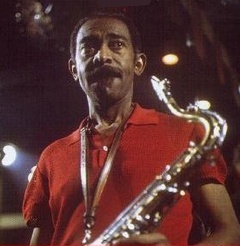Many of the best instrumentalists of the big band era, guys who were admired and emulated by their contemporaries, later became stars in bebop and the progressive jazz movement. But one of the best — tenor saxophonist Don Byas — chose a different route. Although he was fully on board with cutting edge jazz, he spent the latter decades of his career in Europe. It might have cost him a shot at stardom in his homeland.
A native of Muskogee, Oklahoma, Carlos Wesley ‘Don’ Byas grew up in a musical household, the son of parents who were not only musicians themselves but also made sure their son received a classical music education. By the late 1920s Byas had become a polished instrumentalist, proficient on violin, clarinet, and — like his idol, bandleader Benny Carter — the saxophone.
It wasn’t long before the teenage musician began showing up in area bands, and as he moved on to college he even led his own group for a while. By the early 1930s he’d moved to LA, where he would find steady work over the next few years with some of the best bands around, including those led by Lionel Hampton and Buck Clayton.
By the late 1930s he’d moved to New York, where he showed up venues like the Cotton Club and also spent several years working with everybody from his hero Benny Carter to Count Basie. He also spent some time with some of the newly-hatched bebop movement’s best, but the significant turn in his career came in the post-war years when he traveled to Paris. Touring with Don Redmond’s band, he fell in love with Europe (and soon fell for a Dutch woman too) and the continent became his home base for most of the rest of his career. He died in 1972 at age 59.
